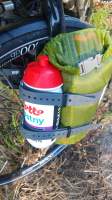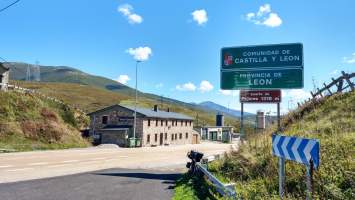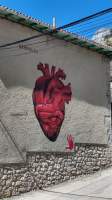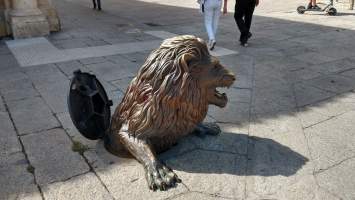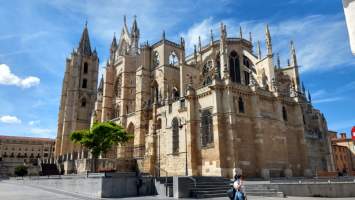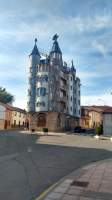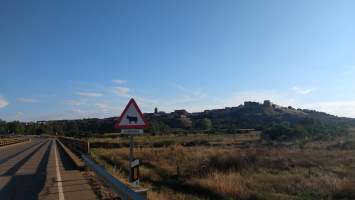Puerto de Pajares
Following the Angliru experience the legs felt completely fried this morning. They still sort of worked, but if legs had a voice these two would be screaming for mercy. Good for me than that they don’t and I don’t even have to tell them to shut up.
To get out of Asturias I had to get up to 1378 m first thing in the morning to the Puerto de Pajares. The climb starts easy enough with a long ramp-up phase before the gradient picks up. On my way there I was passed by two road cyclists who remembered me from the Angliru yesterday and gave me thumbs up.
What’s great about having climbed the Angliru is that one gets to nonchalantly dismiss pretty much every other climb as an easy one. Ventoux? Easy! Tourmalet? Easy! Pajares? Wake me up when it gets hard! The Pajares does feature a stretch of 17 % gradient just before the pass but by and large you should ride it for the view of the Rio Pajares valley, not for the challenge.
Léon
Finally, I’ve left the rainy north behind me. Kind of symbolic that the Angliru marks the westernmost point of this trip, the turning point. Today I headed into completely different territory: rough, dry, not much natural vegetation outside of agriculture. And, from Léon on, really really flat. Of the 1500 m of altitude I climbed today more than 1300 were claimed before noon.
In the city of Léon I took some time for sightseeing, it’s quite pleasant in the labyrinthean small passages of the historical center. On numerous occasions the town advertises its aspirations at the title of "city of sustainable transport" but frankly I found the bike infrastructure lacking, at least as bad ans sparse as in autoland Germany.
The final 60 km to Valderas were through mostly pancake flat territory which near Valencia de Don Juan became more rolling. A consistent but mild headwind was more of a problem than the gradients, as were the midges.
163 km with 1600 m of elevation gain. More on the relaxing side, really.
